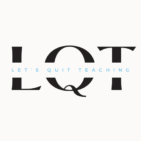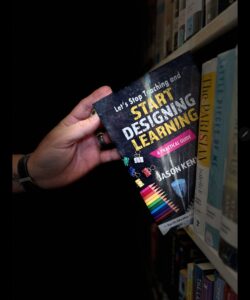When it comes to what we do in the classroom, we have to stop and think about the true purpose of why we are there. I know when I first started out as a high school English teacher, I thought the job was to go into class, do my best Mr. Keating, and inspire, lead, and teach the beauty and wonder of the content. The student’s job was to be attentive and to do the work. That’s what I thought the job was about. That’s why I went to college and learned all that content knowledge for after all. To eventually enter a classroom of my own and impart what I had learned onto the next generation. My job was to teach. I didn’t realize until much later that I was wrong.
What the job really is about is learning. The school was built, the utilities provided, the furniture purchased, the salaries paid, all for the same purpose: learning. When I realized this somewhat obvious idea, I began changing what I did in the classroom for my learners. Instead of teaching as I had for years, my mission now became to make what happened in my classroom produce evidence of learning from the learners. Let’s look at a scenario that probably will happen hundreds of times today across the country.
Students enter a classroom. There is a “bellringer” or warm-up activity to complete immediately. This activity reviewed some basic skills of the content area. Students completed this in less than 5 minutes, and the teacher went over the answers. Next, the students were given the task of filling in the blanks from a presentation the teacher made during the lecture. Students copied the given words or phrases in their notes and the teacher elaborated. Once the notes were completed, the teacher gave out an assignment to complete. This assignment could be presented online or on paper. Students worked to answer the questions, using their notes. Students sat silently in their desks, raising their hands in moments of needed clarification. At the end of class, the students turned in the assignment, gathered their belongings, and left the room. Now, the question on the floor is this: Did learning happen in this classroom today?
Some would say, “Yes, the students learned when they wrote down the notes.” Did learning occur by students writing down a word or phrase from the screen to the paper? Were they making new connections with their current knowledge? Or were they more worried about writing the physical words down? Some would say, “They learned when they answered the questions on the assignment.” Perhaps they were just doing the work out of compliance instead of learning? “Our research shows that students can be busiest and most involved with material they already know. In most of the classrooms we have studied, each student already knows about 40-50% of what the teacher is teaching.” Graham Nuthall from The Hidden Lives of Learners (2007, p. 24).
Others would say that “Maybe something was learned.” To that I ask this: “Isn’t it our job to know if learning happened?” If that is the case, then it is up to us to be intentional in what we do in every part of the lesson, from the Opening to the Instruction to the Work Session to the Closing, to build in moments and methods for learning to be active and visible in the room. We have to elicit evidence of learning from those in the room we are seeking to teach.
In the Opening, that may be a simple Turn and Talk over a posed concept or complete a Sort collaboratively over a list of elements. This is linked to the intended goal for learning today. In the Instruction, the teacher gives out printed notes, details what the upcoming Task will be in the Work Session which will produce evidence that learners met the goal of the learning of the day.. Learners use the notes and select the information that will be most relevant. Teacher also models the upcoming Task and collaboratively creates a Success Criteria with learners about what successful evidence looks like, what specific qualities should the evidence have in it. Learners are made aware of what tools they have access to during the Task in order to address places they get stuck in misconceptions. Learners enter the Work Session having self-assessed and moving to their needed locations in the room. The teacher works with 5 or 6 to get them started, the remaining learners have tools and a Success Criteria and are moving through the Task. The Closing arrives. The teacher has a summarizing activity that allows for the praising of the discovery of mistakes and misunderstandings. Learners share the progress made and the problems they ran into.
Now, in which room scenario was evidence of learning easier to see? All it requires of us is not more work, just different work. We have to come to the realization of what our job is. Yes, we are the content knowledge in the room. We can push all this content out, lecture for hours, give out notes and have students learn little to nothing. The first step in making learning the work of the room is designing what we do with learners in the room that results in evidence that learning actually happened. Otherwise, we are just “doing school.”


